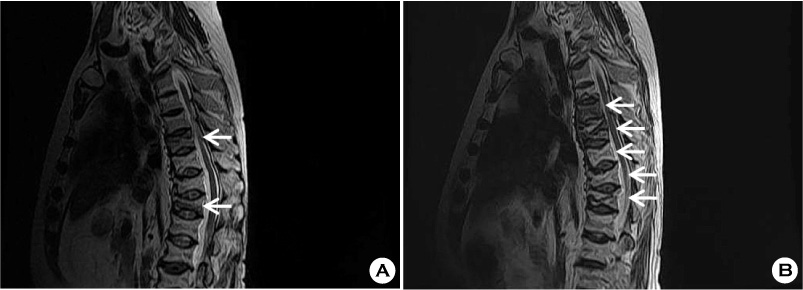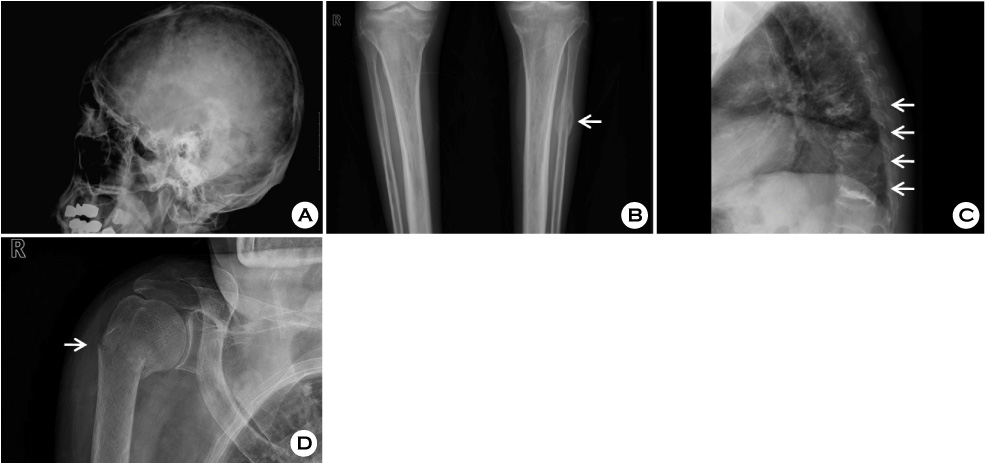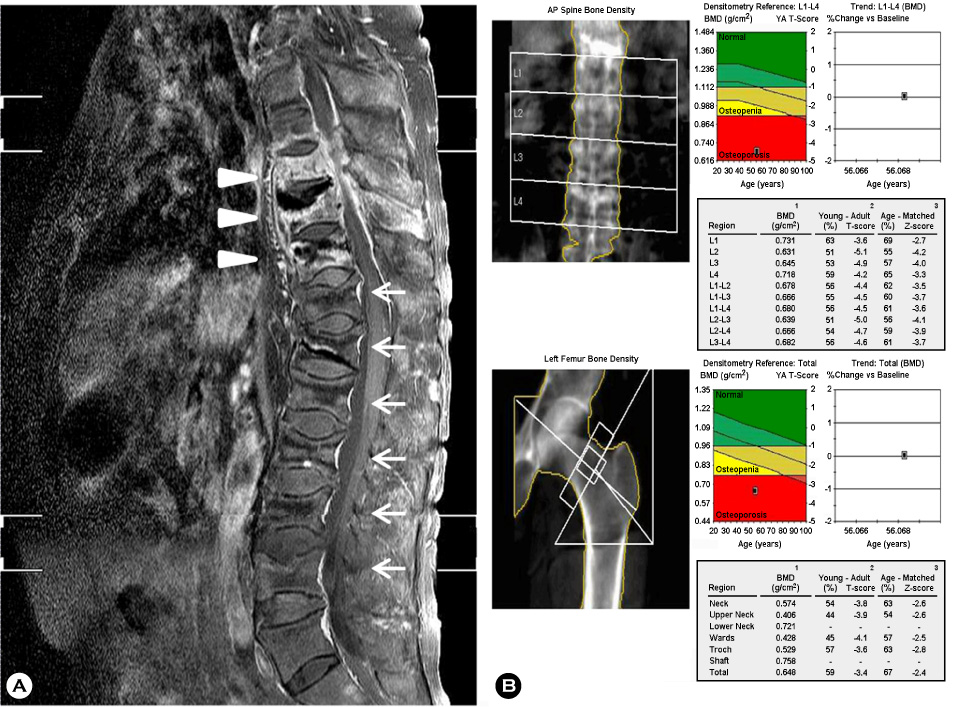J Bone Metab.
2012 Nov;19(2):133-138. 10.11005/jbm.2012.19.2.133.
A Case with Multiple Punched-out Lesions in the Skull and Generalized Fractures Associated with Steroid-induced Osteoporosis
- Affiliations
-
- 1Department of Internal Medicine, Division of Endocrinology and Metabolism, The Catholic University of Korea, Seoul, Korea. mikang@catholic.ac.kr
- KMID: 1975987
- DOI: http://doi.org/10.11005/jbm.2012.19.2.133
Abstract
- Steroid-induced osteoporosis is the most common cause of secondary osteoporosis and accounts for one-fifth of all osteoporosis cases. The fracture incidence under steroid may be as high as 50%. However, many patients do not undergo appropriate risk assessment and treatment before and after steroid exposure. We described a 56-year-old male patient with multiple punched-out lesions in skull unusually as well as vertebral, fibular, rib and humeral fractures during steroid use without proper management.
Figure
Reference
-
1. Mitra R. Adverse effects of corticosteroids on bone metabolism: a review. PM R. 2011. 3:466–471.
Article2. Weinstein RS. Clinical practice. Glucocorticoid-induced bone disease. N Engl J Med. 2011. 365:62–70.3. McDonough AK, Curtis JR, Saag KG. The epidemiology of glucocorticoid-associated adverse events. Curr Opin Rheumatol. 2008. 20:131–137.
Article4. Fitzpatrick LA. Secondary causes of osteoporosis. Mayo Clin Proc. 2002. 77:453–468.
Article5. Bogoch ER, Elliot-Gibson V, Wang RY, et al. Secondary causes of osteoporosis in fracture patients. J Orthop Trauma. 2012. 26:e145–e152.
Article6. van Staa TP, Leufkens HG, Cooper C. The epidemiology of corticosteroid-induced osteoporosis: a meta-analysis. Osteoporos Int. 2002. 13:777–787.
Article7. Grossman JM, Gordon R, Ranganath VK, et al. American College of Rheumatology 2010 recommendations for the prevention and treatment of glucocorticoid-induced osteoporosis. Arthritis Care Res (Hoboken). 2010. 62:1515–1526.
Article8. Hardy R, Cooper MS. Adrenal gland and bone. Arch Biochem Biophys. 2010. 503:137–145.
Article9. Canalis E. Mechanisms of glucocorticoid-induced osteoporosis. Curr Opin Rheumatol. 2003. 15:454–457.
Article10. Avancini-Dobrović V, Vrbanić TS, Kukuljan M, et al. Spontaneous serial fractures of metatarsal bones in female patient with rheumatoid arthritis on long-term steroid therapy. Coll Antropol. 2010. 34:1123–1126.11. Lloyd ME, Davitt S, Hall JR. Bilateral tibia and fibula fractures in a patient with rheumatoid arthritis. Clin Rheumatol. 2001. 20:270–272.
Article12. Majumdar SR, Lix LM, Yogendran M, et al. Population-based trends in osteoporosis management after new initiations of long-term systemic glucocorticoids (1998-2008). J Clin Endocrinol Metab. 2012. 97:1236–1242.
Article
- Full Text Links
- Actions
-
Cited
- CITED
-
- Close
- Share
- Similar articles
-
- Clinical & radiological obstervations of multiple myeloma
- Tuberculous Periostitis of the Orbit: A Case Report
- A Case of Histiocytosis-X
- Vertebroplasty in the Multiple Osteoporotic Compression Fracture
- Long Term Use of Glucocorticoid Induced Osteoporotic Multiple Compression Fractures in Autoimmune Diseases




